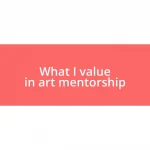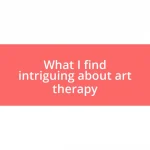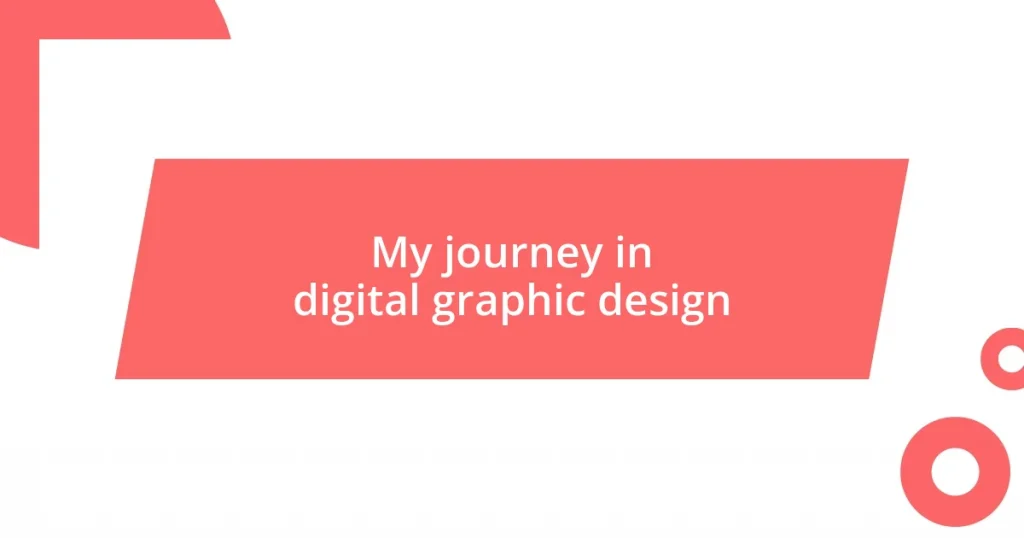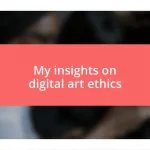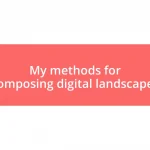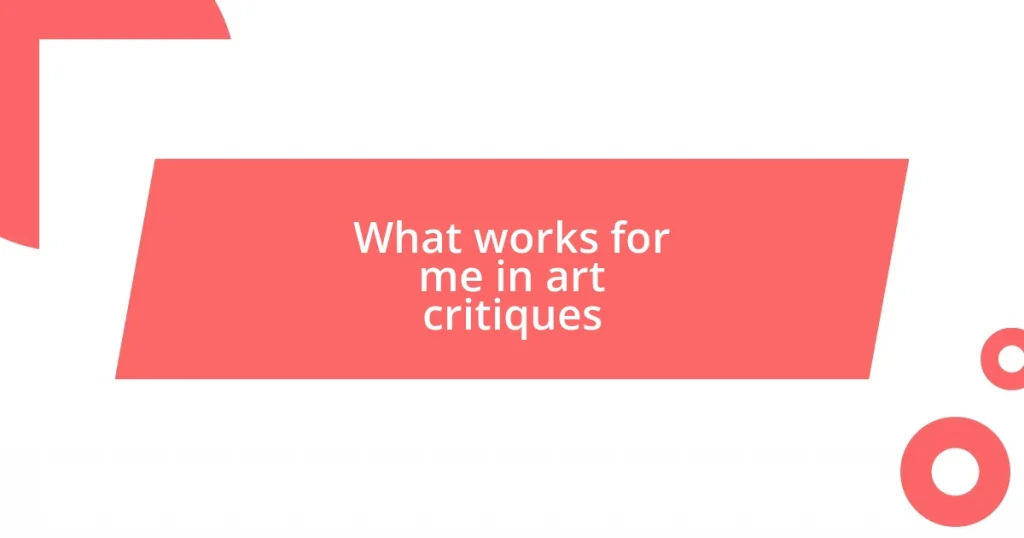Key takeaways:
- Initial fascination with design sparked during high school art class, leading to a deep exploration of creativity and expression through digital platforms.
- Development of essential design skills, including creativity, technical proficiency, and effective communication, significantly enhanced the design process and project outcomes.
- Ongoing education through online courses, tutorials, and networking within the design community has been crucial for growth and innovation in design practices.
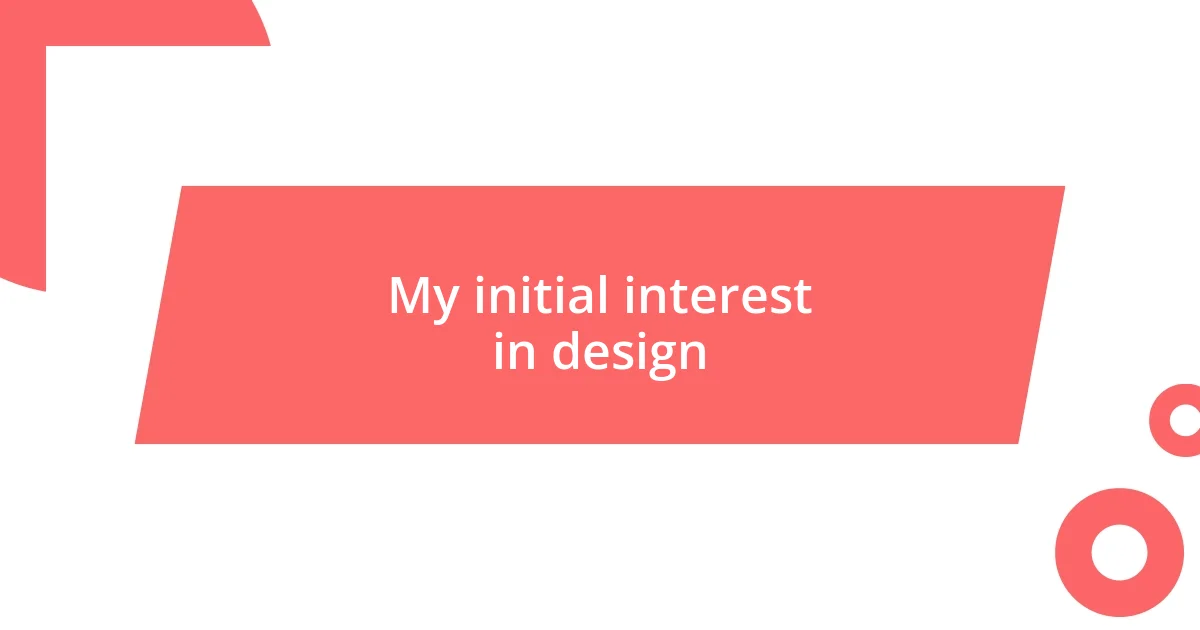
My initial interest in design
My fascination with design sparked unexpectedly during a high school art class. I remember being mesmerized by the way colors interacted on the canvas—each brushstroke felt like a secret I was learning to uncover. It was an exhilarating moment, realigning my world around this creative force.
As I began experimenting with layouts and fonts on simple digital platforms, emotional bursts of pride filled me whenever I completed a project. Would my classmates appreciate my designs? The thrill of sharing my work and receiving feedback was intoxicating. I realized then that design was not just about aesthetics; it was about communication, connection, and expression.
In those early days, I often found myself staying up late, captivated by tutorials and design blogs. I wanted to absorb every ounce of knowledge I could find. Was it the excitement of creation or the potential impact of design that hooked me? I think it was a beautiful blend of both—opening the door to a rewarding journey I still cherish today.
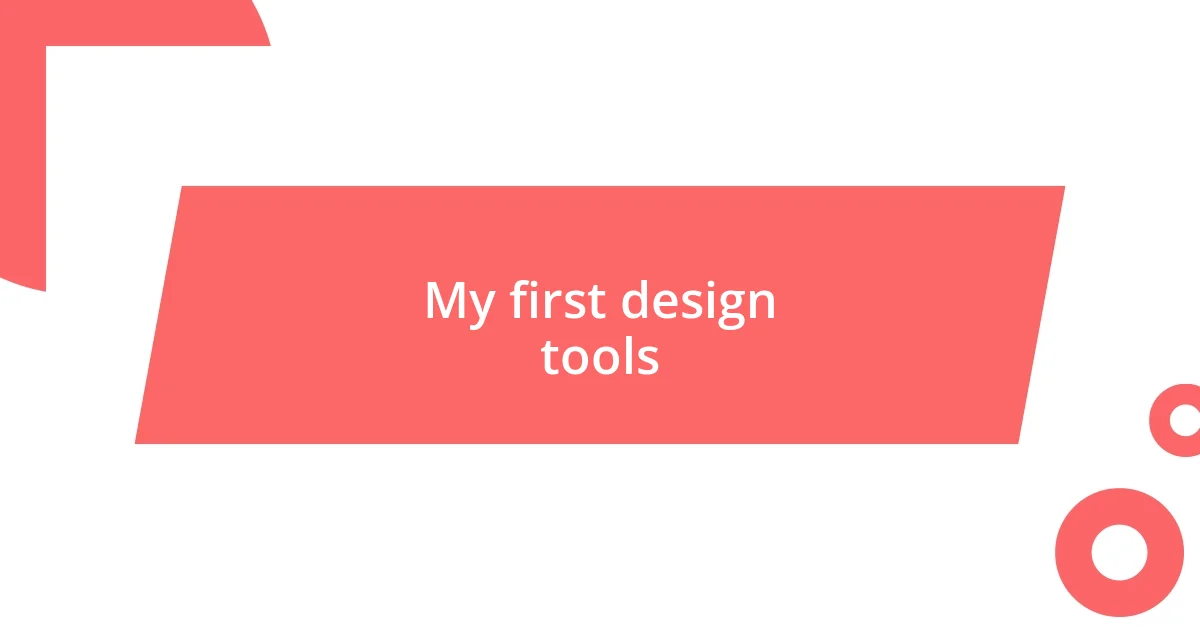
My first design tools
When I first dipped my toes into digital design, my toolkit was quite simple, yet it felt extraordinary. I remember unearthing the wonders of Adobe Photoshop and Illustrator for the first time—these programs were like magical gateways that transformed my chaos of ideas into polished realities. I would spend hours tinkering with every tool, experimenting with shadows, gradients, and layers. The moment I learned how to manipulate an image’s brightness and contrast was a small victory that made me feel like a true artist.
As I got more familiar with design, a few key tools became essential to my creative expression:
- Adobe Photoshop: The realm of photo editing and manipulation—this became my playground.
- Adobe Illustrator: I loved creating vector graphics and illustrations; the precision was simply fulfilling.
- Canva: For quick projects, this user-friendly platform helped me visualize my ideas without any steep learning curve.
- GIMP: This free alternative to Photoshop provided the opportunity to hone my skills without spending a dime.
- Inkscape: I turned to this once I wanted to explore vector graphics without the commitment of paid software.
These tools not only enabled me to express my creativity but also deepened my appreciation for design craftsmanship. Each click, each adjustment, was a step on a journey that I was excited to continue.
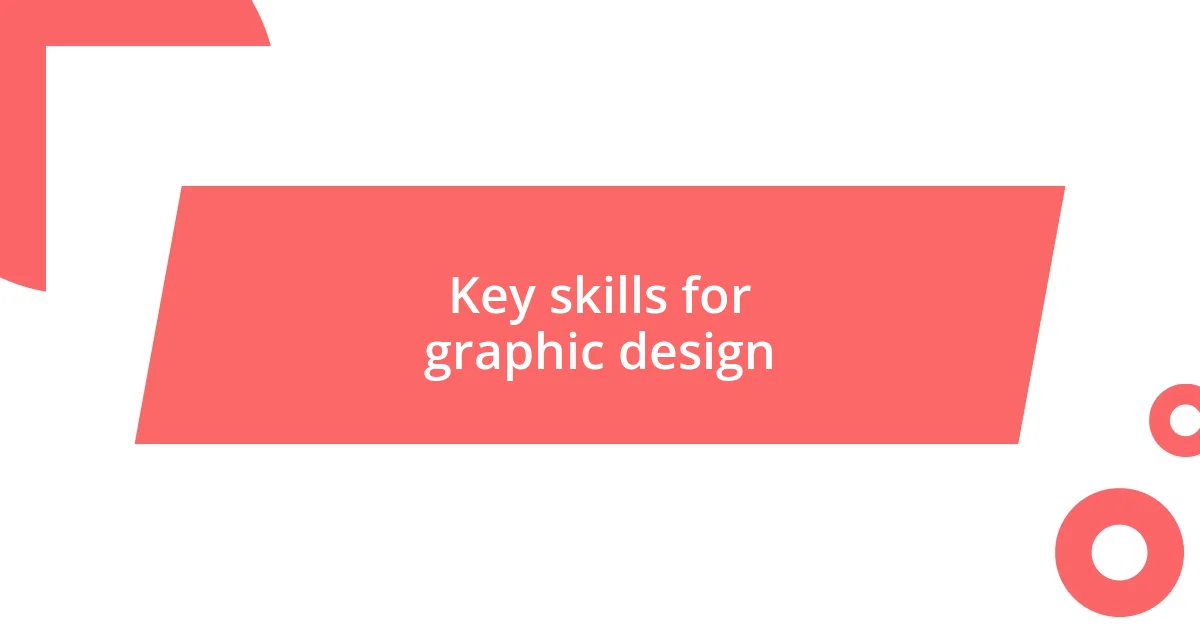
Key skills for graphic design
The key skills in graphic design go beyond just technical proficiency; they blend creativity, communication, and an understanding of aesthetics. I’ve learned that developing a strong foundation in color theory, typography, and layout is essential. Each design project requires a unique approach, and the ability to adapt and innovate is what truly sets a designer apart.
Moreover, I found that honing my software skills with programs like Adobe Creative Suite is crucial, but it’s equally important to have a creative eye. There was a time when I worked on a project that required a vintage look. I pulled inspiration from classic design styles and spent hours adjusting the color palette to evoke nostalgia. That experience taught me the power of aligning design choices with the emotions I wanted to convey.
Lastly, effective communication with clients and team members cannot be overlooked. I remember a challenging project where miscommunication led to a complete redesign. It was a valuable lesson that taught me the importance of clear interactions and understanding feedback fully—skills that are just as vital as any technical ability.
| Skill | Description |
|---|---|
| Creativity | The ability to generate innovative ideas and solutions. |
| Technical Skills | Proficiency in graphic design software and tools. |
| Color Theory | Understanding the relationships between colors and their emotional impact. |
| Typography | The art of arranging text to make written language legible and visually appealing. |
| Communication | Effectively conveying ideas and feedback with clients or peers. |
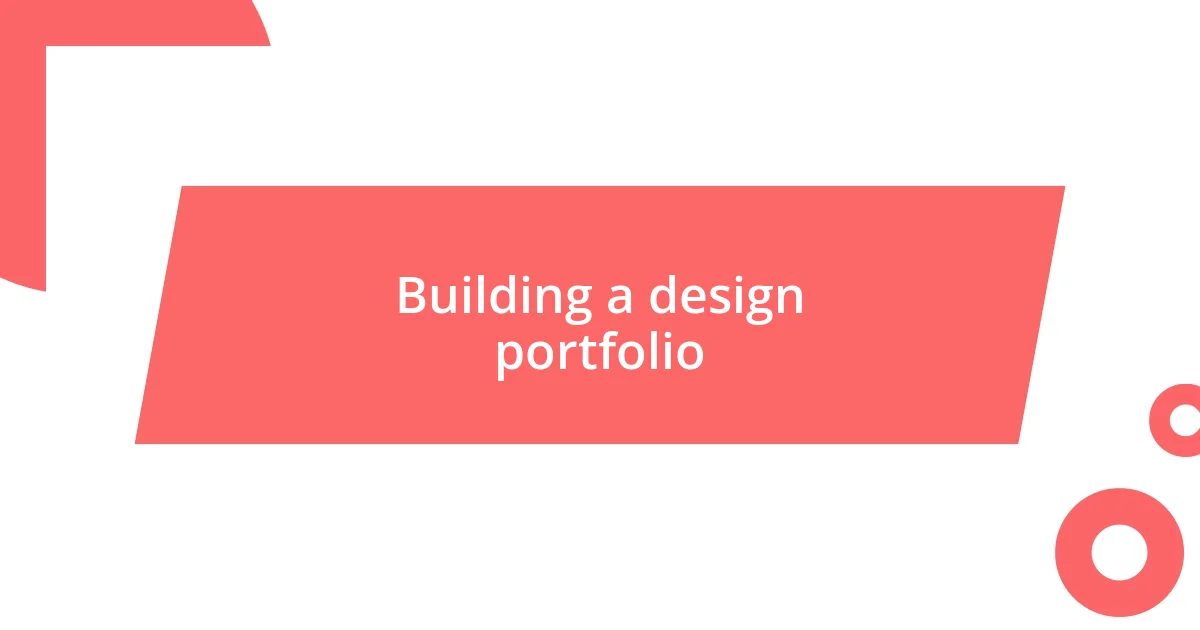
Building a design portfolio
Creating a design portfolio is one of the most rewarding steps in a designer’s journey. I recall the rush of excitement when I decided to showcase my work. Selecting pieces that truly reflected my style felt a bit like curating a gallery; each artwork told a story and demonstrated my growth. Have you ever experienced that thrill of presenting your creations? It’s exhilarating!
As I built my portfolio, I realized the importance of diversity. I included various projects—branding, illustrations, and even personal pieces that spoke to my interests. This variety illustrated not just my technical skills but also my ability to adapt to different styles and audiences. For example, there was a logo design project that pushed my boundaries. A client had a bold vision; I had to step out of my comfort zone, and that piece eventually became one of my favorites in my portfolio. Sometimes, the projects that challenge us the most become the best representations of who we are as designers.
Lastly, I found that regularly updating my portfolio was essential for showcasing my evolving skills. Initially, I had several projects that I was proud of, but as I learned more and explored new techniques, I started removing older pieces that no longer resonated with my current style. This constant refinement not only kept my portfolio fresh but also instilled a sense of pride in my work. What about you? Are you ready to embark on the same journey of reflecting your growth through your portfolio?
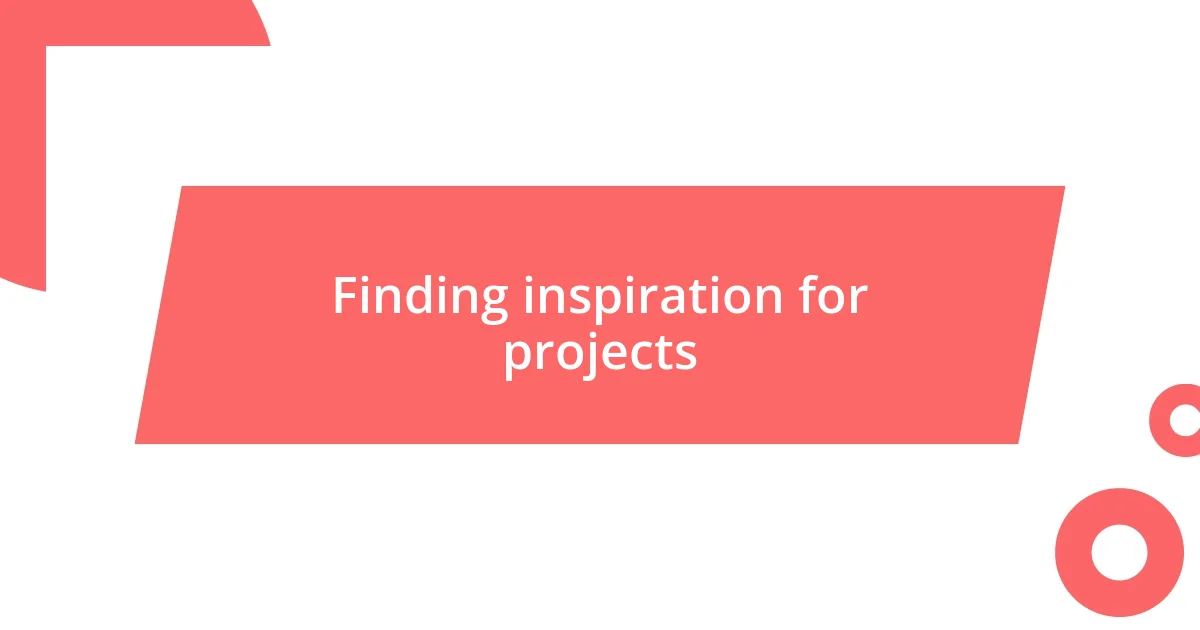
Finding inspiration for projects
Finding inspiration for projects can often feel like a daunting task. I remember a time when I hit a creative wall while working on a website redesign. Instead of forcing ideas, I took a break and went for a walk. Nature’s colors and patterns sparked fresh thoughts in my mind. Have you ever noticed how stepping away can sometimes bring clarity?
In my journey, I’ve realized that inspiration can stem from anywhere: art galleries, street murals, or even everyday objects. I once stumbled upon a quirky coffee shop with an eclectic decor. The mix of textures and bold color choices influenced my next project, where I aimed to create a vibrant and engaging layout. I try to keep my eyes open for these little moments; they can often lead to the most unexpected and rewarding ideas.
Collaboration also plays a significant role in finding inspiration. I often engage in brainstorming sessions with fellow designers. Sharing ideas makes me see concepts from different perspectives. For instance, during a group project, someone suggested a color scheme I would never have considered. That conversation opened up new pathways and ultimately enhanced the final design. Have you experienced similar collaborations that transformed your work?
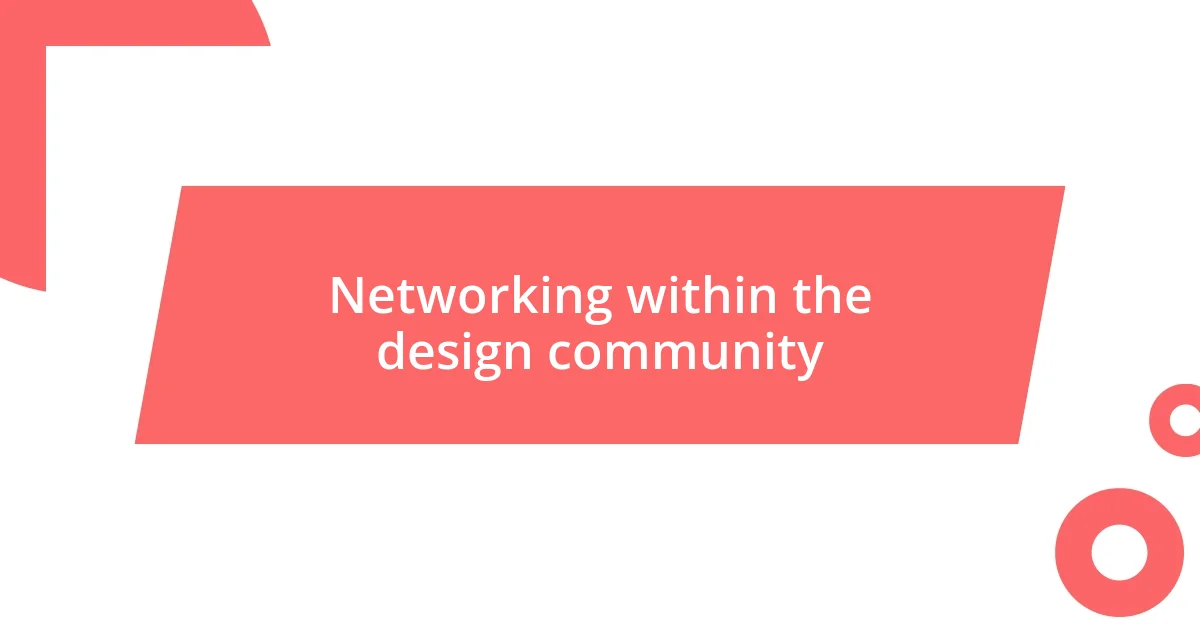
Networking within the design community
Networking within the design community has been one of the most transformative experiences in my journey. I vividly remember attending my first local design meetup, feeling a mix of excitement and nerves. Initially, I was hesitant to introduce myself, but once I started chatting with other designers, it felt like I had entered a world where everyone understood my passion. Have you ever walked into a room and felt an immediate connection? It’s magical.
One significant lesson I learned is the power of genuine connections. I met a seasoned designer who became a mentor to me, providing invaluable feedback on my work and insight into industry trends. That relationship opened doors to job opportunities I never knew existed. I often think about how one conversation can lead to unexpected collaborations or creative partnerships. Have you had a similar experience where a chance meeting changed your career trajectory?
Social media has also become a vital tool in fostering these connections. Platforms like Instagram and Dribbble allow me to showcase my work and interact with fellow designers globally. I recall posting a project that caught the eye of a designer in another country, leading to a cross-continental collaboration that expanded my portfolio. Isn’t it fascinating how technology can bridge distances and create a global community? Embracing these platforms has enriched my professional relationships in ways I never anticipated.
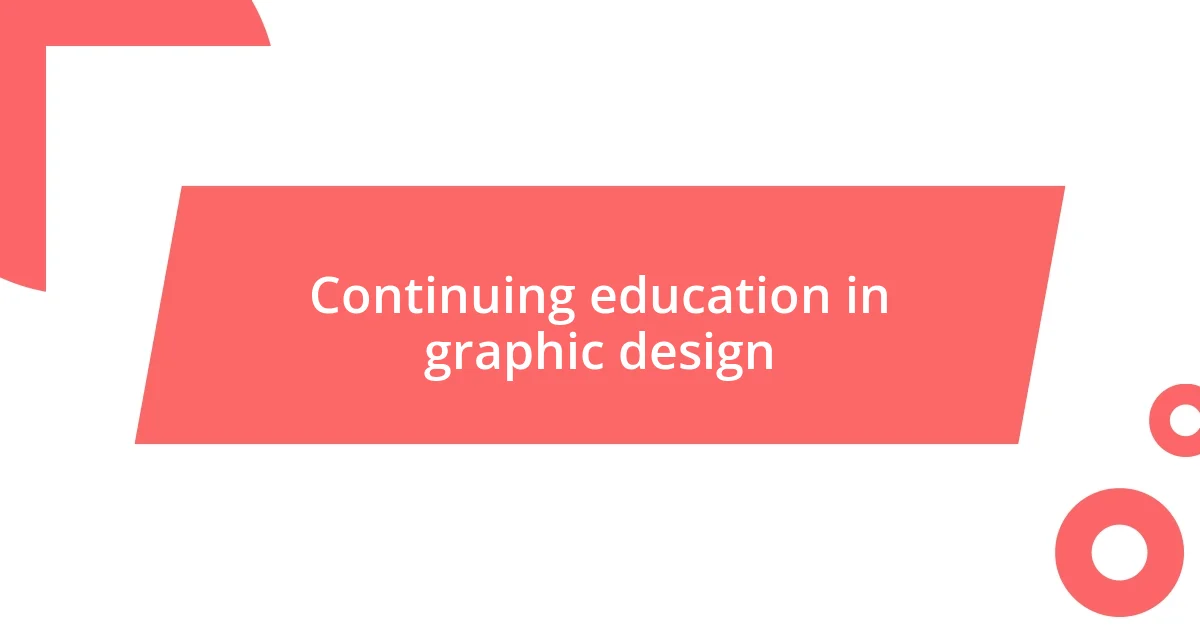
Continuing education in graphic design
Continuing education in graphic design is an essential part of my growth in this ever-evolving field. I still remember enrolling in a course on user experience design after feeling that my traditional graphic skills were limiting my projects. The shift in perspective was like turning on a light switch; it made me appreciate the importance of design from the user’s viewpoint. Have you ever found that an unexpected class shifted your entire design philosophy?
Online platforms have been a game changer for enhancing my skills. I often find myself diving into tutorials, whether it’s learning the latest software or exploring typography trends. Just last month, I took a workshop on motion graphics, which opened up a new dimension for my projects. The excitement of blending static images with movement has reinvigorated my creative process. Isn’t it invigorating to stumble upon a new technique that enhances your work?
Attending webinars and virtual conferences has also been impactful. I recall a session where a renowned designer discussed the future of sustainable design—a topic I hadn’t given much thought to beforehand. This not only sparked new ideas for eco-friendly projects but also made me rethink the materials and processes I choose in my designs. Engaging with thought leaders and peers in these environments keeps my passion alive. What have you discovered about your design style through continued learning?

